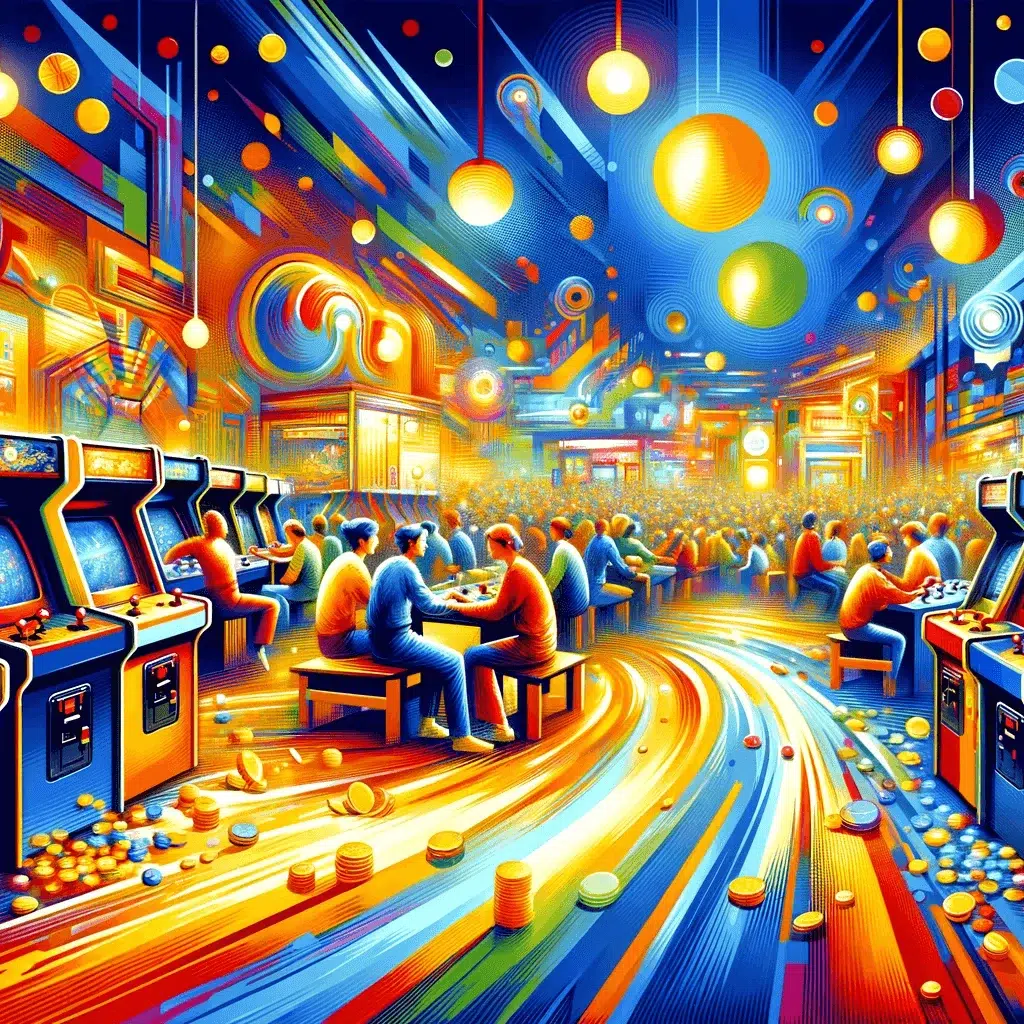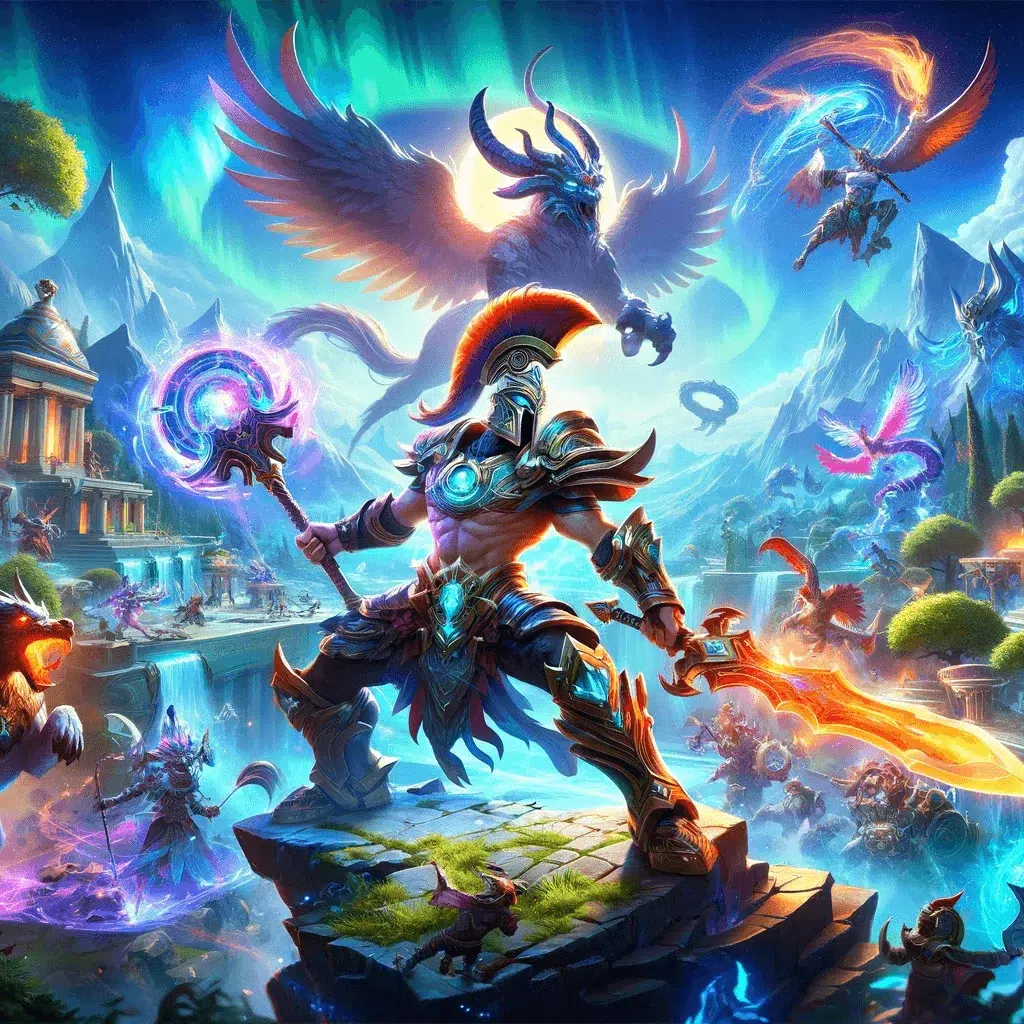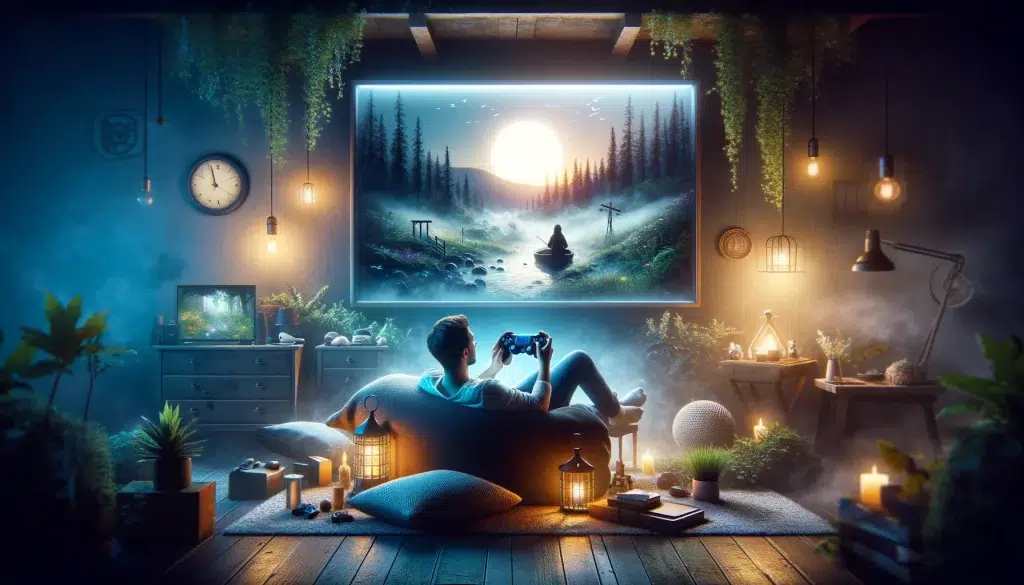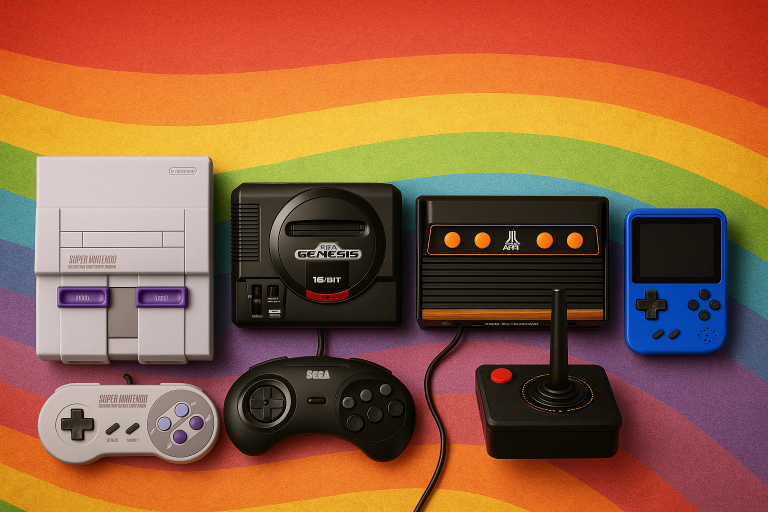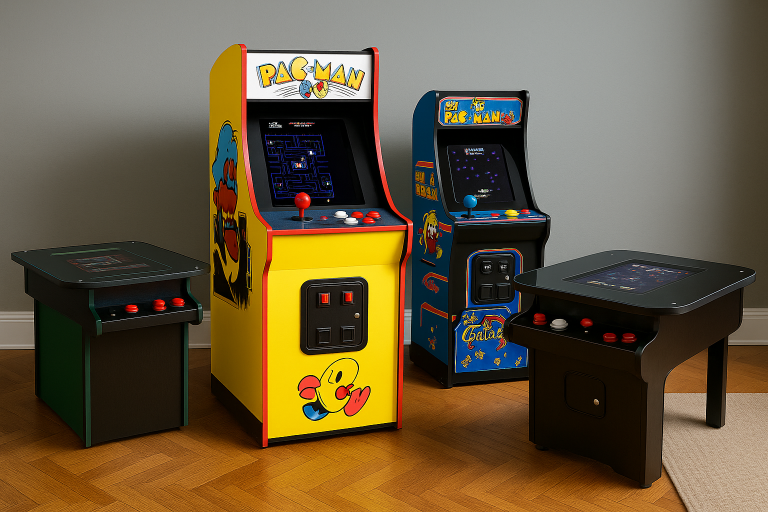Gaming’s Influence on Fashion and Style
Gaming has come a long way since the days of pixelated characters and 8-bit soundtracks. Today, it has become a cultural phenomenon that extends far beyond the world of consoles and controllers. One area where gaming’s influence is particularly evident is in the world of fashion and style. From streetwear to high fashion, gaming has left its mark on the runway and in the closets of gamers and non-gamers alike.
If you’ve been paying attention to fashion trends in recent years, you may have noticed a surge in gaming-inspired clothing. The younger generation, in particular, has embraced the fusion of gaming and fashion, creating a unique style that combines comfort and self-expression. Graphic tees featuring iconic gaming characters, vibrant colors, and retro designs have become wardrobe staples for many.
But it doesn’t stop at t-shirts. Gaming collaborations with fashion brands have become a common occurrence, resulting in limited-edition clothing collections that merge gaming aesthetics with high-end fashion. Brands like Louis Vuitton, Gucci, and Moschino have all jumped on the gaming bandwagon, releasing collections that pay homage to popular games like League of Legends and Pokémon. These collaborations not only bring gaming into the world of high fashion but also help bridge the gap between gaming enthusiasts and fashion enthusiasts.
The popularity of gaming-themed merchandise extends beyond clothing as well. Accessories like hats, sneakers, and backpacks adorned with gaming logos and graphics have become must-have items for many. These items not only serve as fashion statements but also allow gamers to proudly display their love for their favorite games.
But it’s not just in the world of fashion that gaming’s influence can be seen. The impact of gaming on music and soundtracks is undeniable. Video game soundtracks have become a genre of their own, with their epic compositions and catchy melodies captivating listeners worldwide. Gaming music has even found success on mainstream music streaming platforms, with albums and singles from games like The Legend of Zelda and Final Fantasy racking up millions of streams.
Moreover, gaming has inspired musicians themselves. Artists such as Ariana Grande and Travis Scott have incorporated gaming elements into their music videos and performances, creating immersive experiences for their fans. Gaming’s influence on music goes beyond visuals as well, with artists drawing inspiration from gaming narratives and themes to create songs that resonate with players and non-players alike.
From fashion to music, gaming has also made its mark in the world of film and television. Gaming’s storytelling techniques, characterized by immersive narratives and interactive experiences, have influenced the way stories are told on the big and small screens. Movies and TV shows now incorporate gaming-inspired visuals, dynamic camera angles, and fast-paced editing to create an engrossing experience for viewers.
The rise of video game adaptations is another testament to gaming’s impact on the entertainment industry. Movies and TV shows based on popular games like Tomb Raider, The Witcher, and The Last of Us have garnered massive followings, attracting both gamers and non-gamers alike. These adaptations introduce the gaming world to a wider audience while giving fans a chance to see their favorite characters and stories come to life.
Gaming’s influence doesn’t stop at the screen or the runway. It has also permeated the world of art and design. Artists and designers draw inspiration from gaming aesthetics, creating stunning pieces that celebrate the vibrant colors, detailed characters, and imaginative worlds found in games. Video game fan art has become a thriving community, with artists sharing their interpretations of beloved gaming characters and scenes.
Gaming has even influenced graphic design, advertising, and interior design. Advertisements often incorporate gaming imagery and references, appealing to the growing demographic of gamers. Interior designers have also embraced gaming-inspired decor, with gaming-themed rooms becoming a popular trend among enthusiasts.
Beyond aesthetics, gaming has also had a profound social impact. Online multiplayer games have created a sense of community and social interaction, bringing people together from all corners of the globe. Gamers forge friendships, join clans, and compete in teams, fostering a sense of belonging and camaraderie. Gaming has also provided opportunities for social activism, with gamers raising funds for charitable causes and using their platforms to raise awareness about important issues.
Gaming’s role in shaping storytelling and narrative cannot be overlooked. Interactive experiences and player choices have revolutionized storytelling, offering a level of immersion and agency that other mediums struggle to achieve. Gaming narratives tackle complex themes and societal issues, challenging players to think critically and engage with the story in a meaningful way. This innovation in storytelling has even influenced other forms of narrative media, such as books and interactive storytelling apps.
In conclusion, gaming’s influence on pop culture is far-reaching and multifaceted. From fashion and style to music, film, art, and social interaction, gaming has become an integral part of our cultural landscape. As the gaming industry continues to evolve and push boundaries, we can expect its influence to grow even further, shaping the way we think, create, and interact. So, whether you’re a gamer or not, it’s clear that gaming is here to stay and will continue to leave its mark on pop culture for years to come.
Gaming’s Impact on Music and Soundtracks
Music has always been an essential part of storytelling, setting the mood, and evoking emotions. And in recent years, gaming has emerged as a powerful influence on the music industry. From captivating soundtracks to collaborations between gaming and music icons, gaming’s impact on music and soundtracks has been undeniable.
Gaming soundtracks have become more than just background music. They have become a genre in their own right, with millions of listeners streaming them on platforms like Spotify and Apple Music. Iconic soundtracks from games like “The Legend of Zelda,” “Final Fantasy,” and “Halo” have garnered immense popularity and critical acclaim.
These soundtracks offer a unique blend of orchestral, electronic, and ambient music, creating immersive experiences that transport players into the game’s world. They have a way of staying with us long after we’ve put down the controller, becoming nostalgic reminders of our gaming adventures.
In fact, gaming soundtracks have become so popular that they often feature in live performances and concerts. Symphonic orchestras have dedicated entire shows to playing video game music, bringing the immersive experience of gaming to a live audience. This crossover between gaming and music has opened up new avenues for musicians and composers to showcase their talents and reach new audiences.
Not only has gaming influenced the music industry, but it has also inspired musicians to incorporate gaming elements into their own work. Artists like Imagine Dragons, Zedd, and Avicii have embraced gaming culture, featuring gaming imagery and references in their music videos and performances. This fusion of gaming and music creates a bridge between two powerful forms of entertainment, appealing to fans of both.
Gaming has also provided a platform for emerging artists to showcase their talents. Indie games, in particular, have been known to feature original music from independent musicians, giving them exposure and a dedicated fanbase. This symbiotic relationship between gaming and music allows for creative collaborations that push the boundaries of both industries.
Furthermore, the influence of gaming on music extends beyond the soundtracks. Game-inspired music genres, such as chiptune and synthwave, have gained popularity, offering nostalgic and retro vibes reminiscent of classic video games. These genres not only pay homage to the gaming culture of the past but also serve as a source of inspiration for contemporary artists.
In conclusion, gaming’s impact on music and soundtracks cannot be underestimated. From captivating soundtracks that transport us into gaming worlds to collaborations between gaming and music icons, gaming has shaped the way we experience and consume music. By embracing gaming culture and incorporating gaming elements into their work, musicians have found new avenues for creativity and expression. So, whether you’re a gamer or a music lover, it’s clear that the fusion of gaming and music is here to stay.
Gaming’s Role in Film and Television
Movies and TV shows have always been a significant part of popular culture, shaping our entertainment landscape. But in recent years, gaming has made its mark in the world of visual media, influencing storytelling techniques and captivating audiences in a whole new way.
One of the most noticeable effects of gaming on film and television is the incorporation of gaming-inspired visuals and narratives. Directors and cinematographers have embraced the dynamic and immersive nature of video games, incorporating elements like first-person perspectives and action-packed sequences into their storytelling. This infusion of gaming aesthetics has given rise to visually stunning movies and TV shows that transport viewers into thrilling virtual worlds.
Moreover, the rise of video game adaptations has become a testament to gaming’s impact on the film industry. From beloved franchises like “Tomb Raider” and “Assassin’s Creed” to recent hits like “Sonic the Hedgehog,” these adaptations have not only garnered attention from gamers but have also attracted a broader audience. The success of these adaptations highlights the growing influence of gaming on mainstream media and the recognition of the gaming community as a valuable market.
In addition to visual aspects, gaming has also influenced narrative techniques in film and television. Gaming’s interactive and nonlinear storytelling style has inspired filmmakers to experiment with nontraditional narrative structures. Movies like “Inception” and TV shows like “Westworld” have adopted the concept of multiple layers of reality and complex plotlines, reminiscent of the storytelling found in popular video games. This infusion of gaming-inspired narrative techniques has challenged traditional storytelling norms and expanded the possibilities of storytelling in visual media.
But the influence of gaming on film and television doesn’t stop there. The popularity of streaming platforms and online content has given rise to a new wave of gaming-inspired series and documentaries. Shows like “Stranger Things” and “Black Mirror” have drawn inspiration from video games, exploring themes of virtual reality, augmented reality, and the consequences of technology. These shows not only entertain but also engage audiences in thought-provoking discussions about the impact of gaming and technology on our society.
In conclusion, gaming’s influence on film and television has been undeniable. From visual aesthetics to narrative techniques, gaming has revolutionized the way stories are told in visual media. This influence has given rise to visually stunning movies and TV shows, captivating audiences with dynamic action sequences and immersive virtual worlds. Additionally, the popularity of video game adaptations and gaming-inspired content on streaming platforms highlights the recognition of the gaming community as a valuable market. As gaming continues to evolve and shape our cultural landscape, we can expect to see even more exciting collaborations between the gaming industry and visual media. So, grab your popcorn and game controller, because the worlds of gaming and film/television are colliding in spectacular ways!
Gaming’s Influence on Art and Design
Gaming is not just limited to the realm of entertainment; it has also become a powerful source of inspiration for artists and designers. The unique aesthetics and immersive worlds created in video games have found their way into various creative disciplines, from visual art to graphic design and even interior design.
The impact of gaming on art can be seen through the popularity of video game fan art. Artists from all over the world pay homage to their favorite games by creating stunning illustrations and digital paintings. These artworks often capture the essence of the game, showcasing beloved characters and capturing memorable moments. The vibrant communities of digital artists who create and share their gaming-inspired creations have flourished online, forming a supportive and inspiring network.
Gaming has also influenced graphic design, with its bold and dynamic visuals leaving a lasting impression. Many game designers are skilled in creating stunning visuals that grab the player’s attention and enhance the overall gaming experience. This expertise has spilled over into graphic design, where bold colors, futuristic elements, and pixel art aesthetics have become popular choices. From posters and album covers to logos and advertisements, gaming aesthetics have made their mark in the design world.
Furthermore, gaming has even influenced interior design. The popularity of gaming-themed rooms and home setups has grown significantly in recent years. Game enthusiasts are transforming their living spaces into immersive gaming havens, complete with gaming chairs, neon lights, and custom-made shelves to display their prized gaming collection. These gaming-inspired interiors reflect a passion for the virtual worlds that have become such an integral part of their lives.
The influence of gaming on art and design is not limited to visual mediums. It extends to music as well, with video game soundtracks becoming increasingly popular. Gaming music has evolved from simple background melodies to epic orchestral compositions and catchy electronic beats. These soundtracks have gained recognition outside of the gaming community, with many reaching the top charts on music streaming platforms. The distinct soundscapes created for games have captivated listeners, leading to collaborations between game composers and mainstream musicians.
Video game aesthetics and narratives have even made their way into the world of mainstream music videos. Artists have incorporated elements of gaming, such as pixelated animations and references to iconic games, into their visuals. These music videos pay homage to gaming culture and resonate with both gamers and music lovers alike. The blending of these two worlds showcases the impact gaming has on contemporary culture.
Gaming’s influence on art and design is a testament to the power of creativity and the undeniable impact of gaming culture. Whether it’s through stunning fan art, captivating graphic design, immersive interior spaces, or captivating music, the influence of gaming continues to shape and inspire artists and designers around the world. So, the next time you find yourself caught up in a virtual world, remember that you are not only playing a game but also experiencing a form of art that has the power to shape our cultural landscape.
The Social Impact of Gaming: Creating Connections and Community
When it comes to gaming, it’s not just about the thrill of the game or the excitement of the competition. Gaming has had a profound social impact, creating connections and fostering a sense of community in both the virtual and real world. From online multiplayer games to charitable initiatives, gaming has become a powerful force for social interaction and activism.
One of the most significant ways gaming has shaped social interaction is through the rise of online multiplayer games. Gone are the days of solitary gaming in front of a screen. Today, gamers from around the world can connect and play together in virtual worlds, forming friendships and alliances that transcend geographical boundaries. Whether it’s teaming up to defeat a common enemy or embarking on adventures together, these multiplayer games have created a sense of camaraderie and shared experiences.
But it doesn’t stop there. Gaming has also become a platform for social activism and charitable initiatives. Many gamers and gaming communities have come together to raise awareness and funds for various causes. From charity live streams to in-game events that support charitable organizations, gaming has shown its power to unite people for a common goal. Gamers have embraced the opportunity to make a positive impact on the world, proving that gaming can be more than just entertainment.
So how can we make the most of gaming’s social impact? Here are a few tips:
- Join gaming communities: Whether it’s through online forums, social media groups, or in-game guilds, connecting with other gamers can enhance your gaming experience and foster meaningful relationships.
- Participate in multiplayer games: Take advantage of the multiplayer aspect of gaming by joining forces with other players. Collaborate, communicate, and build connections with fellow gamers.
- Support charitable initiatives: Stay informed about gaming-related charitable events and initiatives. Participate in fundraisers, donate to causes you care about, and use gaming as a platform to make a positive impact.
- Promote inclusivity and respect: Gaming communities can sometimes be plagued by toxicity and negativity. Be a force for change by promoting inclusivity, respect, and kindness. Treat others with empathy and create a welcoming environment for all.
It’s important to recognize the social impact of gaming and harness its potential for good. Gaming has the power to bring people together, to foster connections and friendships, and to make a positive impact on society. So the next time you pick up your controller or sit down at your computer, remember that gaming isn’t just about the game itself. It’s about the community, the connections, and the opportunities to make a difference.
Gaming’s Role in Shaping Storytelling and Narrative
Gaming is not just about pushing buttons and winning virtual battles. It has transformed the way stories are told and narratives are shaped. In fact, gaming has revolutionized storytelling, offering immersive and interactive experiences like never before. In this article, we will explore how gaming has influenced and shaped storytelling across various media forms, including books and interactive storytelling apps.
Gaming has given us the power to become the protagonist of our own stories. Through the medium of video games, players can make choices that affect the outcome of the narrative. This interactive element adds a whole new dimension to storytelling, allowing players to feel more invested and engaged in the plot.
One prime example of gaming’s influence on storytelling is the rise of “choose your own adventure” books. These books allow readers to make choices at certain points in the story, leading to different storylines and endings. This concept of interactive storytelling, borrowed from gaming, has breathed new life into the world of books and captivated readers of all ages.
Beyond books, gaming has also inspired the development of interactive storytelling apps. These apps allow users to participate in the narrative by making choices or solving puzzles. They offer a unique blend of gaming and storytelling, creating an immersive experience that keeps users engaged and entertained.
Gaming’s impact on storytelling doesn’t stop at interactive experiences. It has also pushed the boundaries of what can be explored in narratives. Video games often tackle complex themes and address societal issues in thought-provoking ways. They provide a platform for exploring topics such as identity, morality, and social justice.
The success of games like “The Last of Us,” which delves into the complexities of human relationships in a post-apocalyptic world, demonstrates the power of gaming narratives to evoke emotions and provoke deeper reflection. These narratives have the potential to leave a lasting impact on players, prompting important discussions and raising awareness about social issues.
The influence of gaming on storytelling extends beyond the gaming industry itself. We see its impact in other forms of media, such as movies and TV shows. The rise of video game adaptations, such as the “Assassin’s Creed” film or the Netflix series “The Witcher,” showcases the popularity and appeal of gaming-inspired narratives.
Furthermore, gaming has influenced storytelling techniques in visual media. Directors and screenwriters have drawn inspiration from gaming aesthetics, incorporating dynamic camera angles, visually stunning landscapes, and epic action sequences reminiscent of gaming experiences. This infusion of gaming elements has added a new level of excitement and immersion to the film and television industry.
In conclusion, gaming has had a profound impact on storytelling and narrative across various media forms. It has revolutionized storytelling by offering immersive and interactive experiences that allow players to shape their own destinies. Gaming has pushed the boundaries of storytelling, addressing complex themes and societal issues. Its influence can be seen in books, interactive storytelling apps, and in the visual media of movies and TV shows. As gaming continues to evolve, we can expect even more innovative and captivating narratives to emerge, further enriching our cultural landscape. So, grab your controller and get ready to embark on a storytelling adventure like no other!
As an affiliate of Amazon and other retailers, we may earn a small commission when you buy via our links, at no additional cost to you. Thank you!

